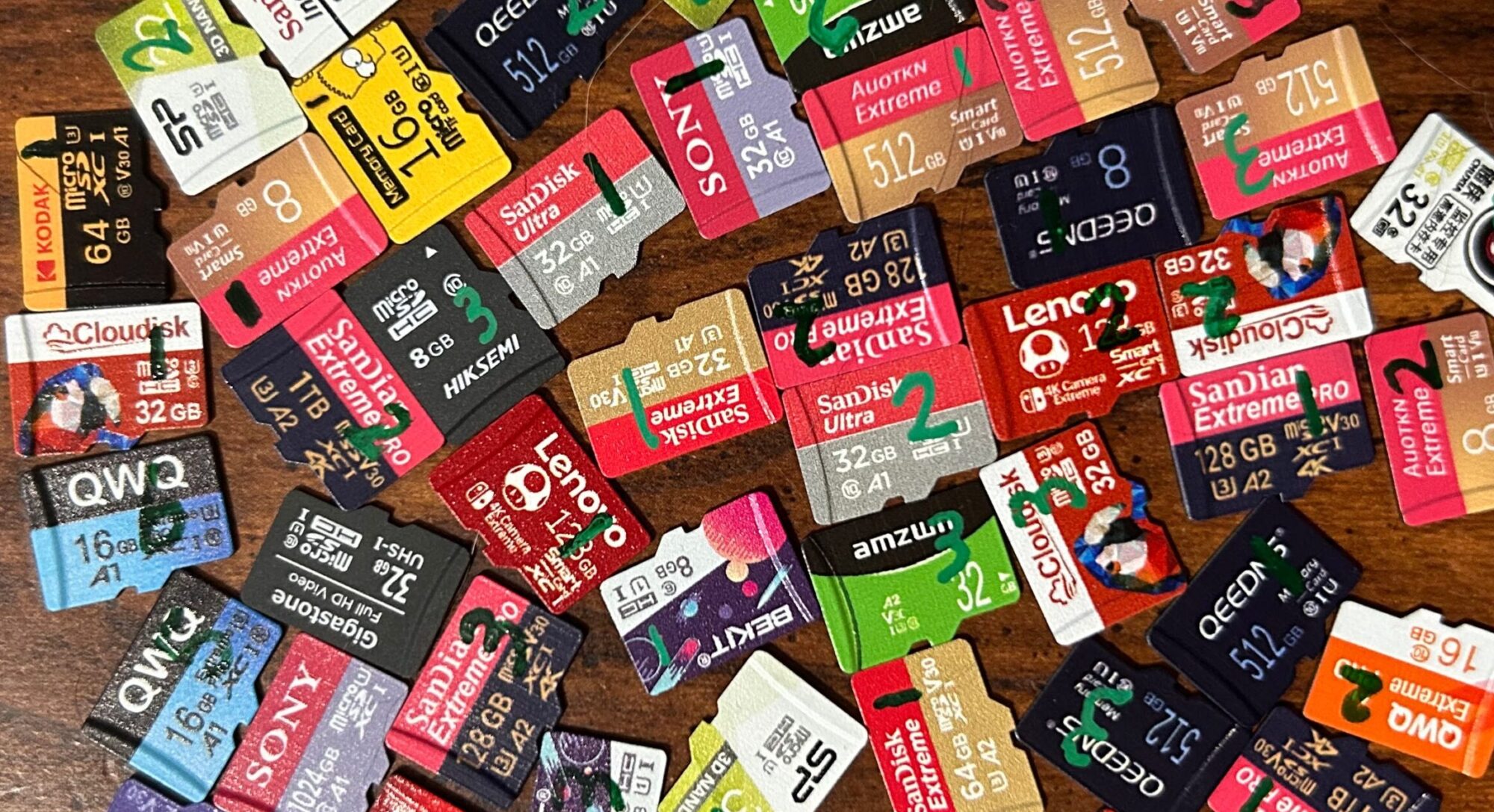SanDisk is a well-known name in the flash memory industry. Founded in 1988, they developed the first flash-based SSD. They were later acquired by Western Digital in 2016, before being spun off as a public company in early 2025.
SanDisk is a name I’ve long been aware of, and one that — prior to this project — I was biased in favor of. I have a number of single-board computers that take microSD cards, and I typically defaulted to the SanDisk Ultra 16GB for their storage — and most of the time, had no issues with them. And since they’re such a major brand, I wanted to make sure they were properly represented in this project.
I found out this particular card while perusing through SanDisk/Western Digital’s online store (prior to their breakup) and seeing what options they had available. And since I seem to be reviewing everything else of SanDisk’s, why not add this to the mix?
These cards met the criteria that I set out for determining what’s considered a name brand card, so their results will be included in the name brand bucket in my results. (Technically, one of the criteria I set out is that the package should include the vendor’s phone number — which these cards don’t — but all the other information is there, so I’ll give this one a pass.)
Performance-wise, these cards were not stellar — overall, they ended up being just a tiny bit below average. Random read speeds were its strength, with scores coming in between the 58th and 61st percentiles (as of the time of this writing). However, it suffers in sequential write speeds — these came in between the 28th and 38th percentiles.
These cards carry the Class 10 and U1 marks. (SanDisk didn’t set the bar very high here.) All performance metrics were high enough for it to qualify for both of these marks.
On the endurance testing front:
- Sample #1’s first error was a two-sector wide address decoding error during round 1,367. It chugged along for quite some time without any further errors. During round 3,064, however, the USB hub — to which its card reader was plugged into — had issues and needed to be reset. When I plugged the hub back in, every other card on this hub immediately started working; however, this card wouldn’t respond to commands, giving us yet another example of a SanDisk card dying suddenly and without warning.
- Sample #2’s first error was a two-sector wide address decoding error during round 1,762. It died the same way sample #1 did — when the USB hub that the reader was plugged into needed to be reset, it decided to give up the ghost. It had been doing just fine right up until then.
- Sample #3’s first error was an address decoding error, affecting four sectors, during round 1,645. And, not wanting to deviate from the pack, it died the same way samples #1 and #2 did — at the same time as when a USB hub needed to be reset.
Side note: All three samples did technically experience earlier errors; however, I’m almost positive that these were device mangling errors and thus not the card’s fault. Therefore, I’ve decided to discard those errors. I’ve since added code to my program to detect and mitigate these types of errors.
These cards do make an endurance claim: the package claims that they can endure up to 16TBW (terabytes written — and the back of the package defines a terabyte as “1 trillion bytes”). So how did they do? Given their capacity, 16TBW would work out to 502 read/write cycles. Technically, these cards went beyond that (by a factor of 6x, at a minimum). However, I feel like SanDisk set the bar pretty low here, as we have many other cards in this survey that were rated for (and survived for) much longer than this one was.
Overall, I don’t think I’m terribly impressed by these cards. They’re marketed as being ideal for surveillance applications, which requires not only high endurance but also strong sequential write speeds — and these cards just didn’t have either one. As I discussed above, sequential write speeds were pretty poor (comparatively speaking). And endurance was pretty poor — again, comparatively speaking: the average time spent below the 0.1% failure threshold is sitting at about 9,000 read/write cycles (as of the time of this writing), and these cards only averaged about 4,296 read/write cycles. While these cards aren’t the worst ones I’ve ever tested, they definitely wouldn’t be my first choice — regardless of whether it’s for video surveillance or just general use. In the 32GB category, I’d go with something like the Kingston Canvas Select Plus 32GB — which scored much better in both sequential write speeds and endurance — instead.
November 9, 2025

